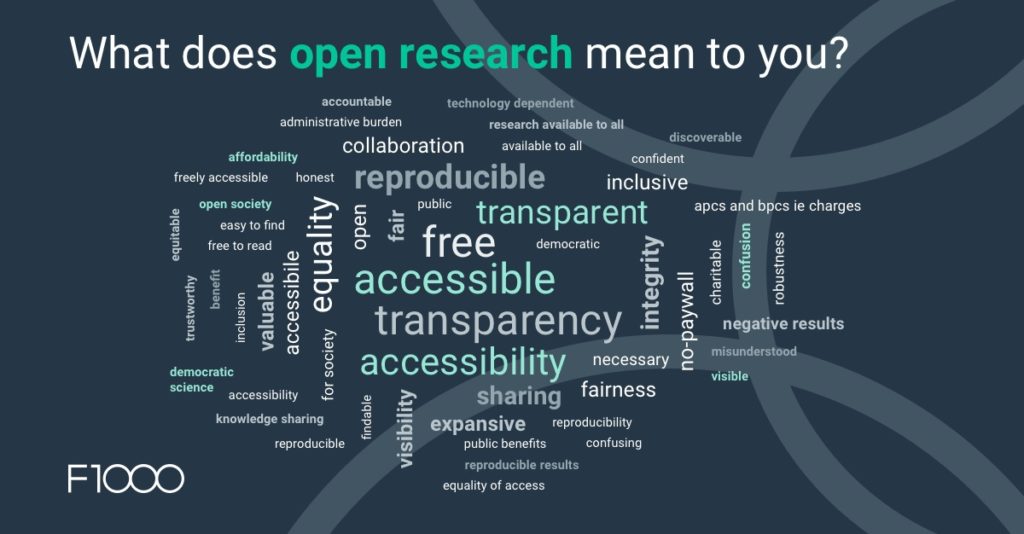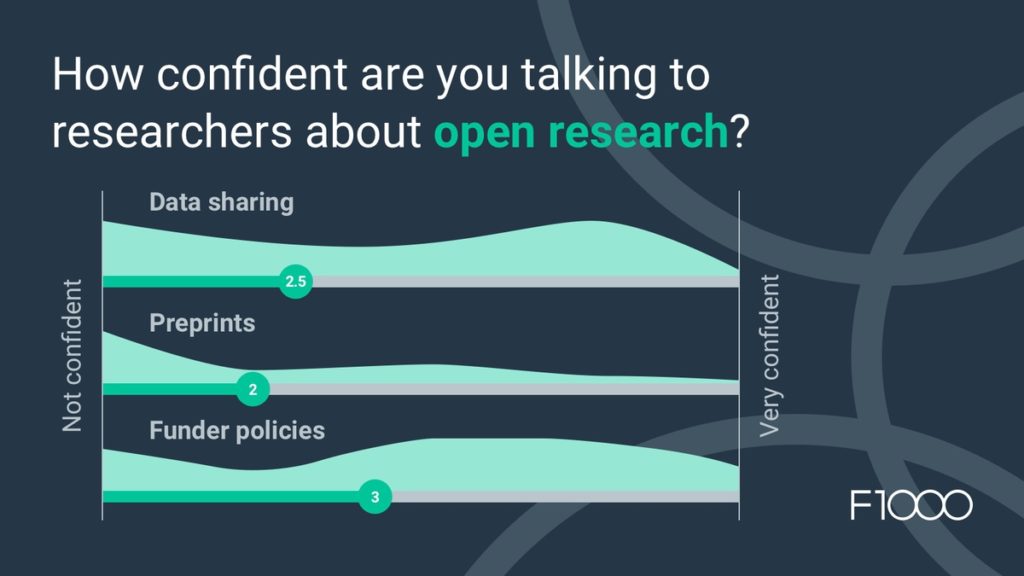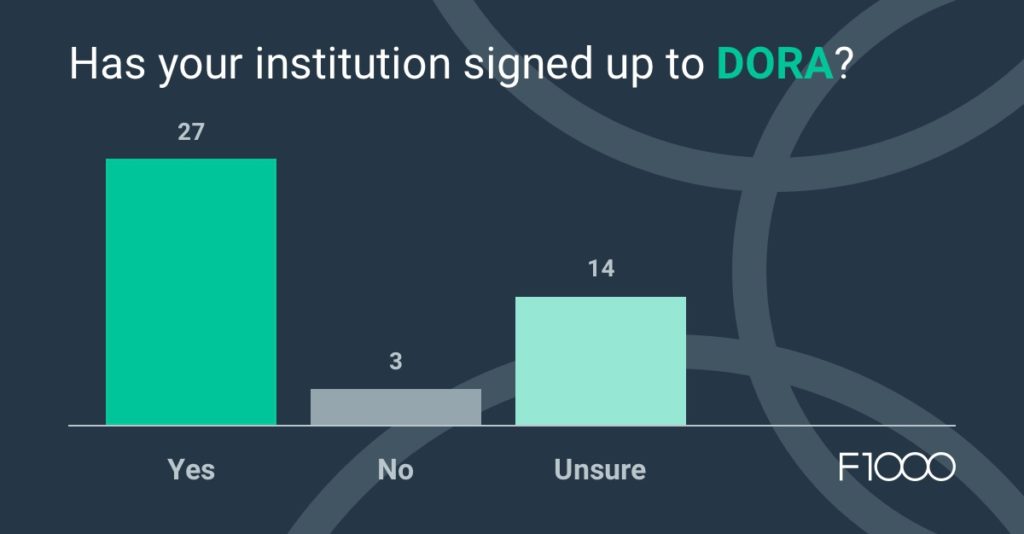
The future of open research
At F1000, we recently hosted a plenary session on the open research movement at the annual Association of Research Managers and Administrators (ARMA) Conference. At the start of the session, we asked 73 research managers what the term ‘open research’ meant to them. The top two words that came to mind were transparency and accessibility.

These two concepts go hand in hand. When the data underlying academic research is made open and accessible, it makes it easier to question, share, replicate, validate, confirm, and build upon the evidence which underpins the results – boosting transparency and trust in the research process and the findings themselves.
This accelerates the pace of scientific discoveries and allows the findings from academic research to filter into the real world quickly – driving innovations in technology, boosting the economy, and leading to better evidence-based policymaking.
The path forward
While the benefits of open research are clear, there is still a lot of cultural and behavioural changes needed to widely embed these practices in the research world.
At ARMA, we also asked research managers how confident they were at talking to researchers about open research. The results showed an overall lack of confidence, particularly when talking about data sharing and preprints. So, what can we do to change this?

There are several things that publishers, institutions and funders can do to encourage cultural and behavioural change towards open research practices.
For instance, funders can insist that the output of publicly funded research is made freely available on completion.
This is already standard policy for research funded by the European Commission. It’s also a popular policy in the US, for instance it has been a requirement that the results of clinical trials funded by the National Institute of Health (NIH) be made publicly available since 20161. The Howard Hughes Medical Institute (HHMI), an American non-profit medical research organization, will also insist that research funded from its grants is published open access from 20222. President Biden is even reportedly considering a national open access policy3.
cOAlition S, an international consortium of research funding and performing organisations, is also leading the path towards open research. The consortium insists that research funded by public grants must be published in compliant open access journals or platforms. Research funders signed up include the WHO, the Bill & Melinda Gates Foundation, and the Wellcome Trust.
Changing how we evaluate research – it’s not where you publish, it’s what you publish
While funders, institutes and funding bodies can all play their part, researchers themselves need to be given more choice to be open with their work.
One barrier preventing them from doing so is the traditional emphasis that has always been placed on journal-based metrics when assessing an individual scientist’s merit. A classic example of this is the Journal Impact Factor (JIF) metric.
Although a journal’s Impact Factor has been a widely adopted tool to assess research impact, it is a proxy metric and not necessarily a useful or holistic way to assess the intrinsic value of an individual research article. It’s important to look at a range of metrics measuring how research is shared and re-used, and not just the venue, journal or platform where an article is published.
One way that publishers and research institutions can change this is by signing up to DORA. The San Francisco Declaration on Research Assessment (DORA) is a set of recommendations designed to ensure that “the quality and impact of scientific outputs…is measured accurately and evaluated wisely.”
DORA’s key aim is to “not use journal-based metrics, such as Journal Impact Factors (JIFs), as surrogate measures of the quality of individual research articles, to assess an individual scientist’s contributions, or in hiring, promotion, or funding decisions”.
Instead, it recommends that funding agencies, institutions and publishers focus on the scientific content of the paper, and consider the value and impact of all research outputs (including datasets and software) in addition to research publications.
As of November 18, 2021, 20,670 organizations and individuals have signed the declaration, including universities, research institutes, learned societies and funding bodies from around the world4. Both F1000 and Taylor & Francis are signatories.

Alternatively, there are other types of metrics that offer a better way of evaluating the impact of papers. These article level metrics such as views, download numbers and altmetrics more accurately reflect the societal impact of research. They reveal a great more about the impact of research than JIFs, as papers that are more widely read are much more likely to lead to real world impact and future collaborations. If funders and promotion panels valued these metrics instead of JIFs, it would help to give researchers the choice to publish open access, and galvanize the movement towards open research.
Open research – the future journey
Realizing the full potential of open research requires a culture change in the world of academia, and change is never easy. The most important factor in accelerating the shift towards open research is talking about it. Researchers, funders, publishers and research institutions can all play their part in this. It’s time to challenge the status quo and tell the world about the benefits of open research.
F1000 and our role in open research
Our mission at F1000 is to accelerate the reach of knowledge and put it in the hands of those who will shape the future. We do this by providing open research publishing platforms and services to research funders and institutions, including the European Commission, Wellcome Trust and the Bill & Melinda Gates Foundation, as well as directly to researchers through our own open research publishing platform, F1000Research. Our passion has always been to empower researchers to communicate their findings openly. We were the first publisher to truly embrace open research publishing with the launch of our post-publication transparent peer review model. This model combines the opportunities offered by technology with a passion for identifying new ways to validate and share research. Our culture of innovation means that we’re always striving to serve our partners and audiences better. We continue to expand our open research proposition with new publishing solutions, like Open Plus Books, and global partnerships that drive inclusive practices and collaboration across borders. Find more about our work with research communities here.
